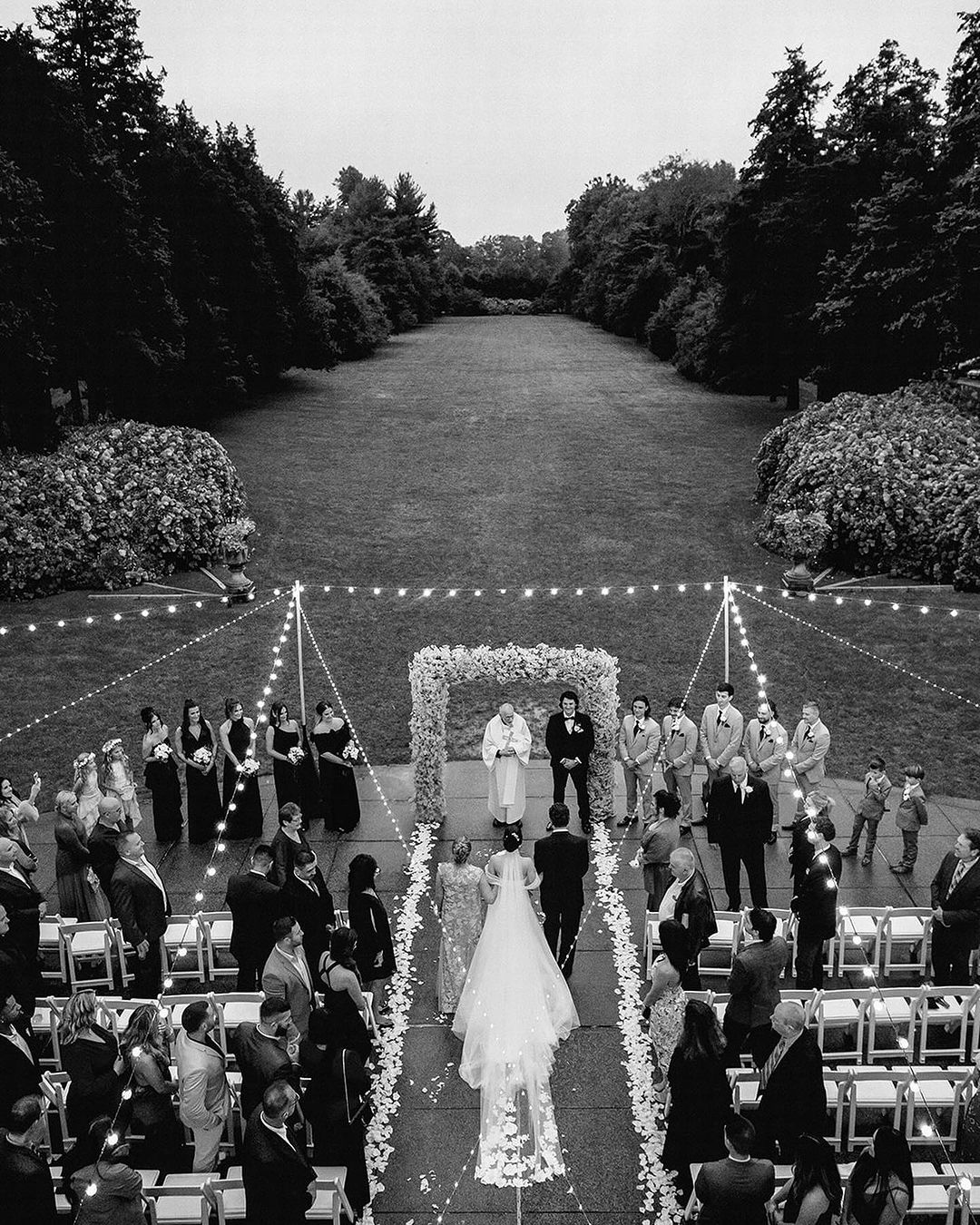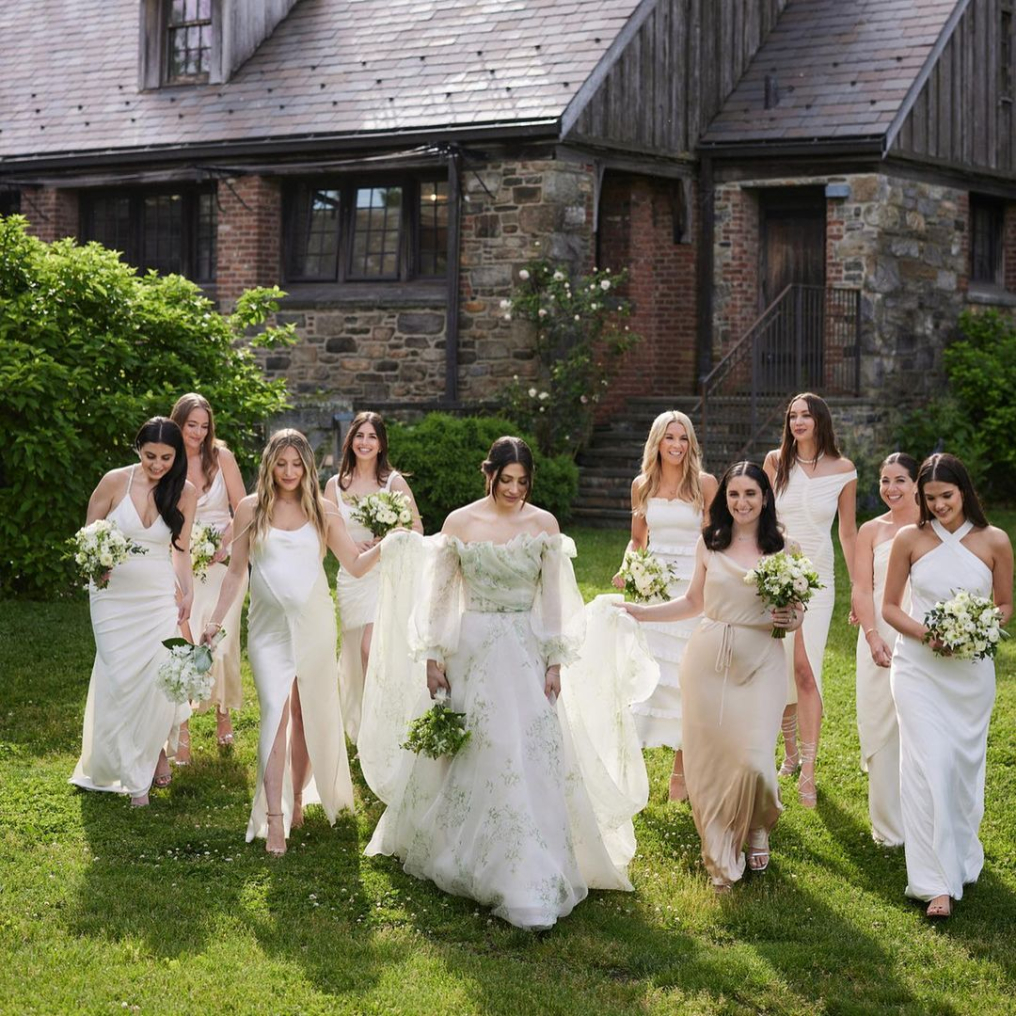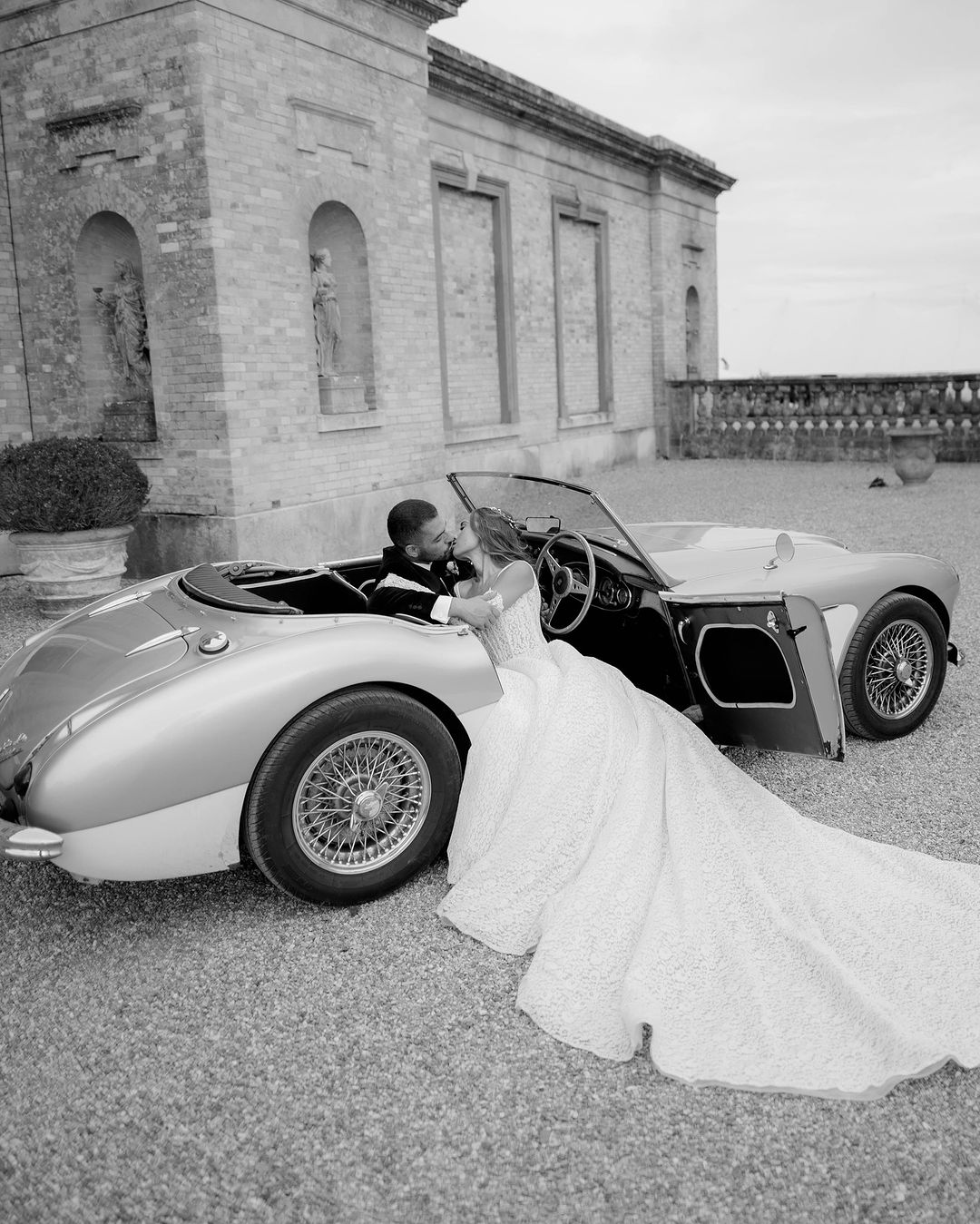Decoding the Significance of the Garter Toss Tradition
- Author: Natali Grace Levine
- Reading time: 5 min 41 sec
- Publication date: 12/22/2023
- Updated: 01/21/2025
The garter toss, a fascinating ritual often spotted in wedding celebrations, always seems to draw smiles and curiosity. Nestled within the tapestry of matrimonial customs, it stands out as a blend of tradition and playful charm. Imagine peeling back layers of time, uncovering tales and meanings that have shaped this quaint custom. In our exploration, we turn our focus to the garter itself – a seemingly small element of bridal attire that has journeyed from practical use to becoming an emblem of wedding joy. Let's delve into how this piece has woven its story into the fabric of wedding traditions!

What Exactly is a Garter

A garter is more than just a piece of cloth; it is a traditional bridal accessory. Garters on the bride's legs served a practical use in the past, holding up stockings in an era before elastic. It is now a symbol of the bride's attire, often extravagant and tucked behind the layers of the wedding gown. Because it is traditionally only revealed during the garter tosses ritual, this delicate band combines both beauty and mystery.
Wedding Garter Tradition Origin
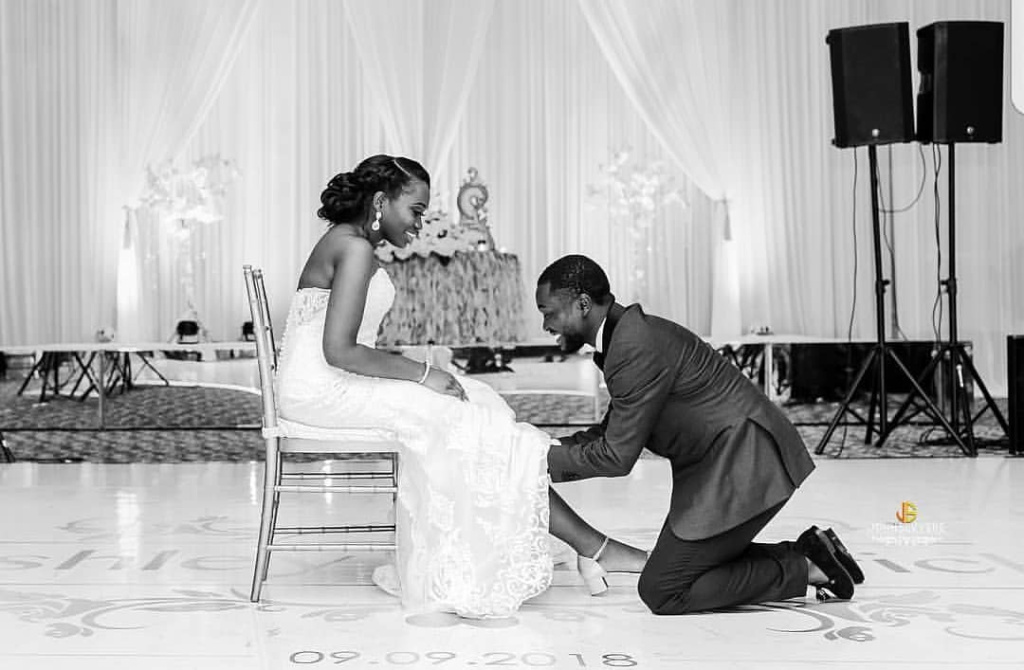
The bridal garter has a long history and differs from culture to culture. Its origins are buried in mystery, reflecting the diverse customs and beliefs of various communities. Here, we'll look at some of these unique origins and cultural modifications.
Medieval European Origins
In medieval England and France, there was a belief that obtaining a piece of the bride's clothing would bring good luck. This led to a somewhat invasive practice where guests would try to rip off a piece of the bride's gown. To prevent this, the tradition of flinging the bride's stocking was adopted, evolving later into the garter toss.
Another theory suggests that the garter served as proof of the marriage's consummation. In some European societies, witnesses were required to obtain a token, like a garter, as evidence that the marriage was consummated.
Cultural Variations and Adaptations
The French have a similar tradition known as the "Jarretière." However, their approach involves an auction of the garter, where guests bid for it, and the proceeds go to the bride and groom. This differs significantly from the English tradition of simply tossing the garter to unmarried men.
The groomsmen in Scotland have a tradition of removing the bride's garter and throwing it to the single males. This is comparable to the more well-known garter throw, except it is done in a more communal manner.
In the United States, the garter toss has become a staple of wedding receptions, often paired with the bouquet toss. This version is more in line with the English tradition, focusing on fun and celebration rather than the earlier connotations of luck or proof of consummation.
What is the Symbolism of a Wedding Garter
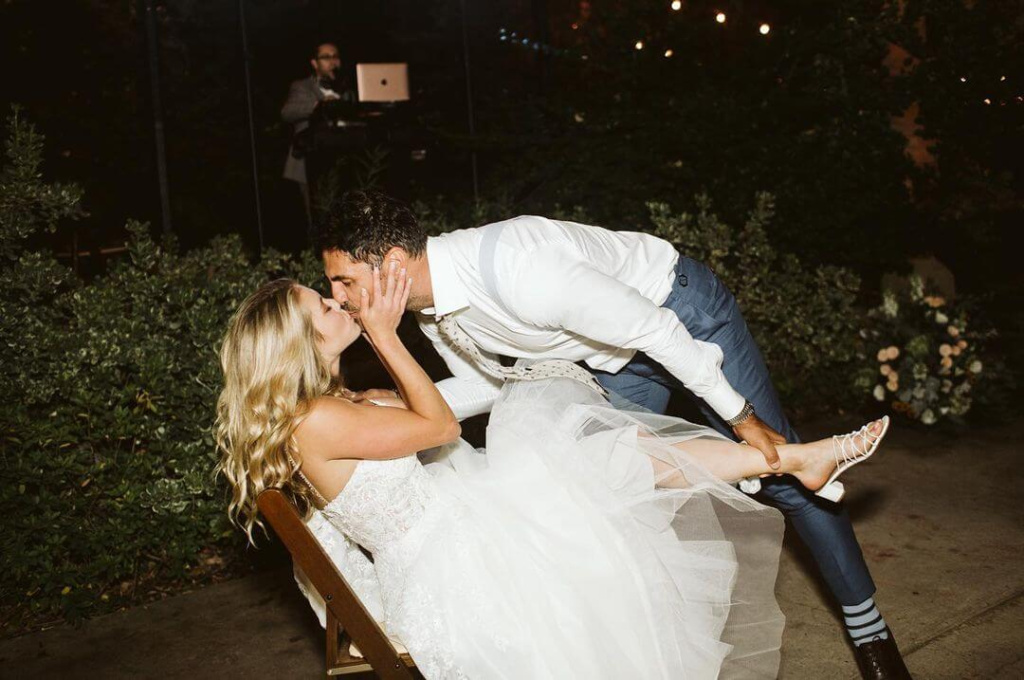
The wedding garter, a small yet significant bridal accessory, holds various symbolic meanings across different cultures and historical contexts. Its symbolism extends beyond a mere wedding tradition, encapsulating deeper connotations about marriage, the bride, and the wedding ceremony.
- Purity and Chastity: Historically, the garter was often associated with the bride's purity and chastity. The act of removing and tossing the garter was a symbolic gesture, indicating the bride's transition from maidenhood to marriage.
- Good Fortune and Fertility: In many cultures, the wedding garter is believed to bring good luck and fertility to the couple. This belief stems from the idea that owning a piece of the bride's attire, especially something as intimate as a garter, would transfer some of her good fortune to the recipient.
- Protection and Warding Off Evil: The garter is regarded to have protective properties in various traditions. Wearing the garter was thought to protect the bride from evil spirits on her wedding day, a widespread superstition in medieval times.
- Transition to Married Life: The removal of the garter symbolizes the couple's readiness to begin their new life together. It represents a physical and symbolic transition from being single to being a married couple, often seen as a playful and intimate part of the wedding.
- Unity and Bonding: The garter toss ritual can also symbolize the unity and bonding of the newlyweds. The act of the groom removing the garter and then tossing it to unmarried guests is a public demonstration of their newly formed bond and shared life.
- Token of Love and Affection: In a more personal context, the garter can be seen as a token of love and affection. It's often chosen or given as a gift by the groom, making it a special and intimate part of the bridal attire, symbolizing the love and affection shared between the couple.
Each of these symbolic connotations adds layers of complexity and cultural richness to the garter's significance in the wedding ceremony.
Modern Garter Toss Meaning

Today's garter throw has evolved into a playful and sometimes cheeky part of the wedding. It's a moment of light-hearted fun, where the groom removes the garter and tosses it to unmarried male guests. This act is often seen as predicting who will be the next to marry. While rooted in tradition, the modern garter toss is more about entertainment and creating memorable moments. It shows how traditions can adapt, retaining their core significance while embracing contemporary values of fun and inclusivity.
Which Leg Should the Garter Be Worn On
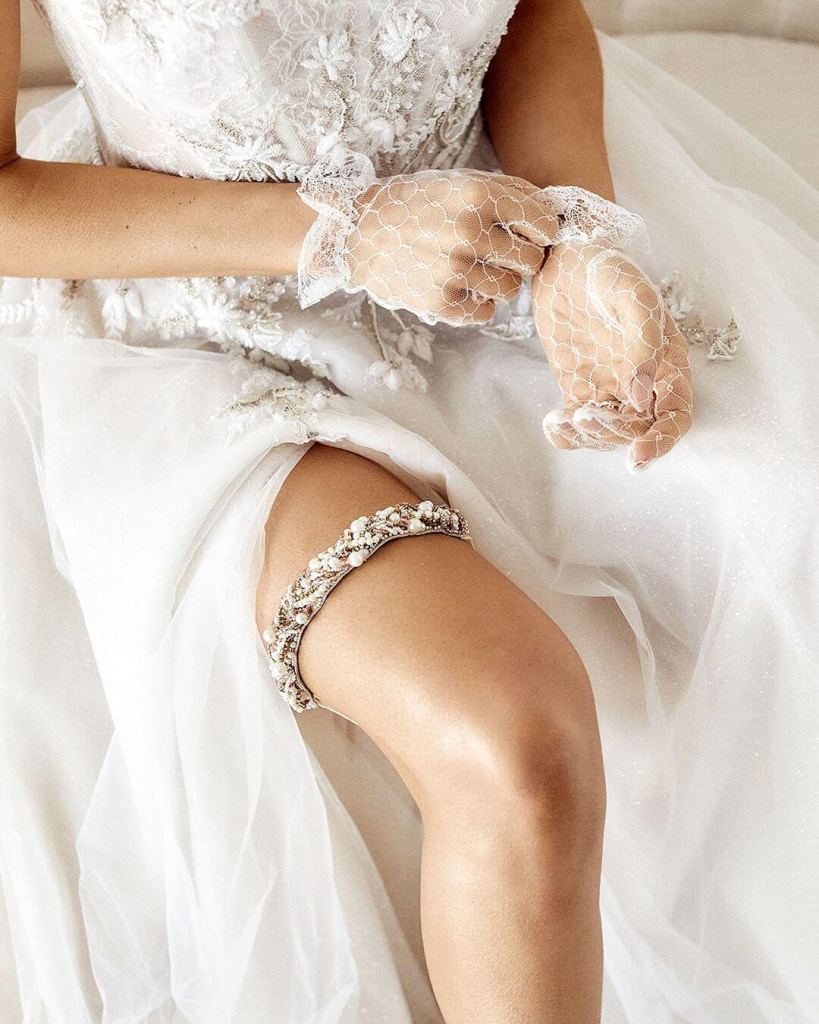
The question of why brides wear the garter on a specific leg is less about tradition and more about preference and comfort. There is no hard and fast rule regarding which leg the garter should be worn on. Some brides choose based on the fit of the garter or the design of their dress. Others might select a leg for sentimental reasons, such as wearing it on the same side as an heirloom piece. This flexibility in the tradition allows brides to personalize their wedding day experience, making it a reflection of their individuality.
Who Takes Off the Garter
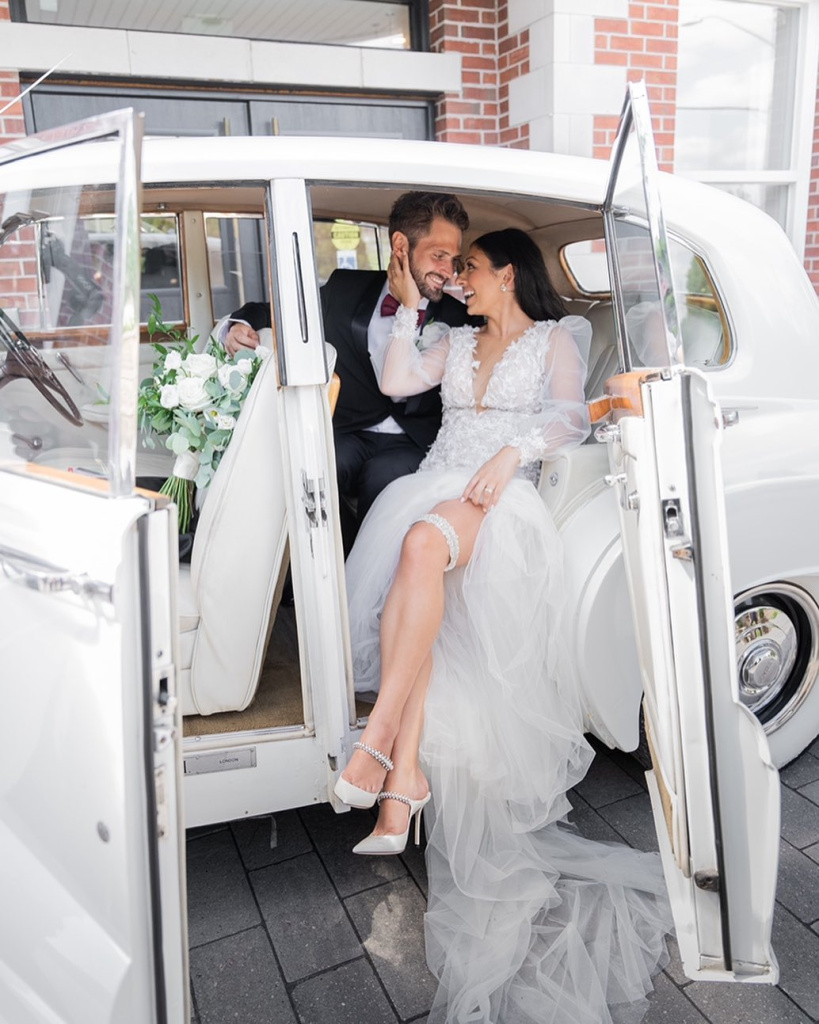
Traditionally, the purpose of a garter is intertwined with who removes it. In most weddings, the groom is the one who takes off the garter, often during the reception. This act is symbolic, representing the groom's role in his new marital life and the couple's shared intimacy. However, modern couples sometimes deviate from this norm, opting for a more private removal or forgoing the tradition altogether. This shift underscores the evolving nature of wedding customs, adapting to the comfort and values of the couple.
Is It Necessary to Wear a Garter at Your Wedding

Wearing a garter at your wedding is entirely up to you. While it's a charming custom, it's not required. Modern weddings are becoming more concerned with expressing the couple's personalities and beliefs. Some brides wear the garter as a nod to tradition, while others opt out for simplicity or personal comfort. This option illustrates the current approach to weddings, which honors individual choices and the unique tale each couple brings to their special day.

Alternatives to Throwing a Garter
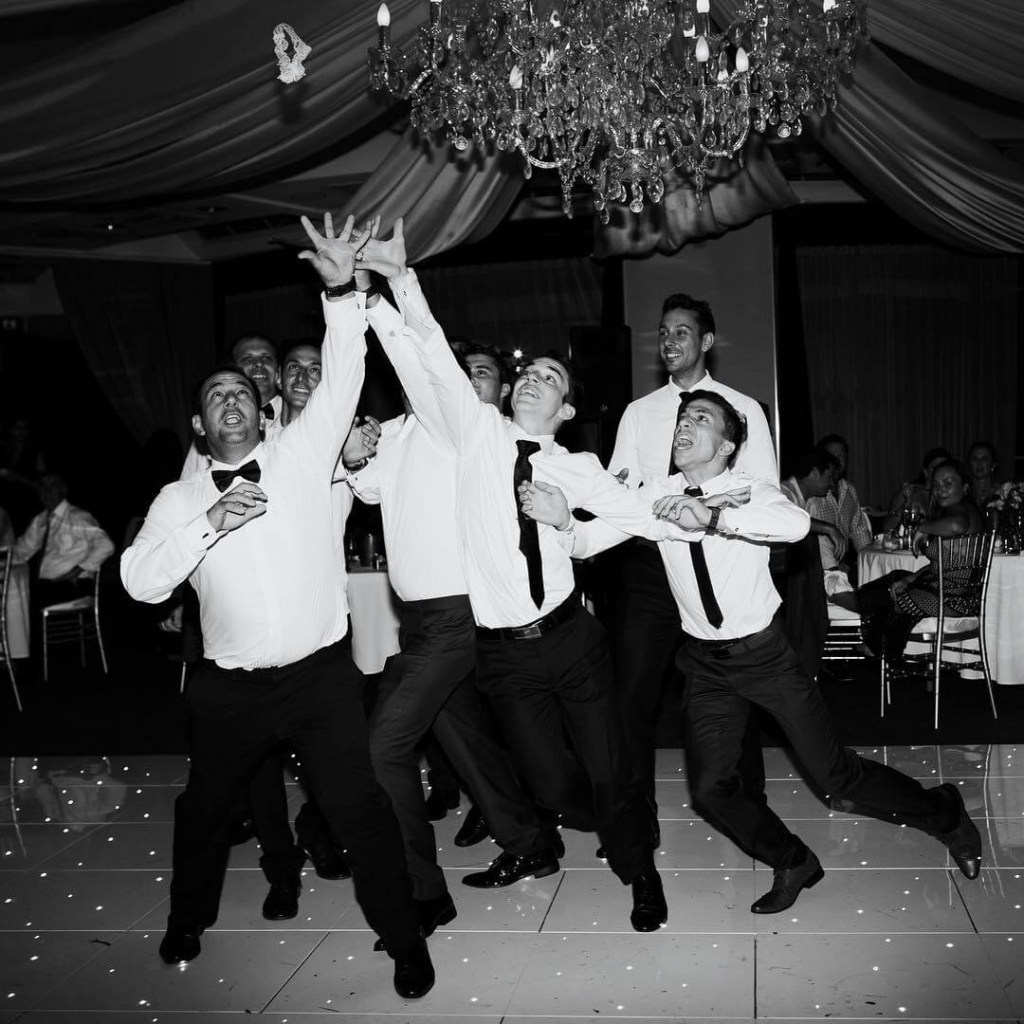
While the garter toss is a longstanding tradition, many modern couples are seeking alternatives that better align with their personal style or the inclusive nature of their celebration. Here are some creative and thoughtful options.
Tossing a Bouquet
Instead of the traditional female-only bouquet toss, consider opening it up to all guests, regardless of gender or marital status. This inclusive approach can add a fun and modern twist to the event. Another idea is the breakaway bouquet, which splits into several smaller bouquets mid-air, allowing multiple guests to catch a bouquet and spread joy and luck.
Sharing a Special Dance
An Anniversary Dance involves all couples at the wedding. The DJ or band plays a song, and couples gradually leave the dance floor based on how long they've been together, ending with the longest-married couple. It's a beautiful tribute to lasting love. Alternatively, a Group Dance for Singles invites all single guests for a special group dance, celebrating individuality without the pressure of the traditional toss.
Gift or Token Giveaway
Replacing the garter toss with a raffle or lottery where all guests can participate can be exciting. Prizes can range from small tokens to more substantial gifts. Another thoughtful idea is announcing a charitable donation in lieu of a garter toss, sharing your joy with a wider community.
Creative Activities
Engage your guests in a wedding-themed trivia game, with winners receiving small prizes or special honors. Setting up a station where guests can write messages or marriage advice creates lasting memories. Alternatively, a fun photo challenge or scavenger hunt can involve everyone and create memorable, candid moments.











